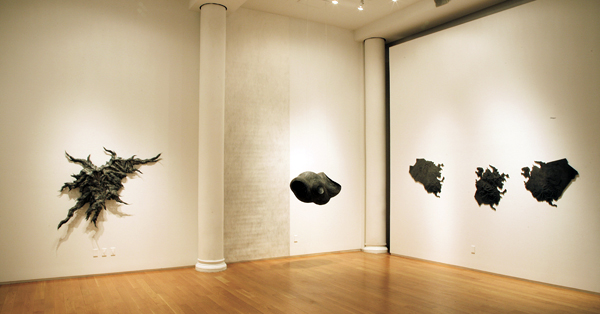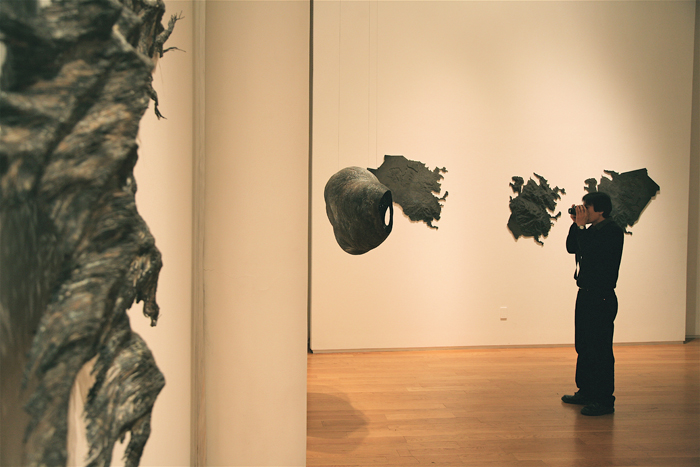The title of this
show is especially suited to the works of Won because it refers
to the change inherent in nature as macrocosm but also in
the human organism as microcosm. Won’s sculptural and
two dimensional works can be seen in terms of Neo-Confucianist
tenets dealing with natural changes seen in the concept of
li. It was through the li that Neo-Confucianism saw universal
patterns as four dimensional through which things become actualized.
The transformation of energy can be found in Won’s mature
style that developed from three dimensional/object into flat/conceptual
works seen in his recent production. Man as a microcosm is
alluded to in these latter works as line rather than represented
as in Won’s earlier map series. The human is integrated
into the macrocosm via the correlations of yin-yang polarities
that according to the Chinese philosopher Liu Shao result
in the energy phase of wu-hsing.


Won’s monochromous works that can be associated and
discussed in terms of ink painting or calligraphy whose principles
have also been analogized with nature. In fact the Chinese
considered the strength of the brushwork as the bone and the
fluidity of line as the C‘hi or energy. Chinese philosophy
often discusses calligraphy in terms of Pan Ku the primordial
being wherein his bones are the mountains and his blood are
the rivers. Accordingly, Won’s monochromatic maps that
have developed into flat elegant lines can be associated with
these principles and seen in terms of calligraphic line. Won’s
leitmotifs can be read in terms of steep cliffs and valleys
or soft grassy knolls and mountains that change, flow, grow
and permutate in time.
For many years Won has taught art at Ewha Women’s University
in Seoul, South Korea and has exhibited his work internationally,
although this is his first exhibition in the United States.
|
